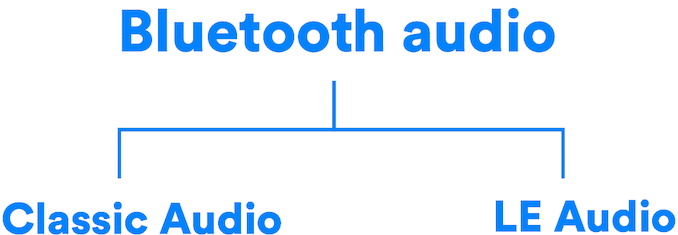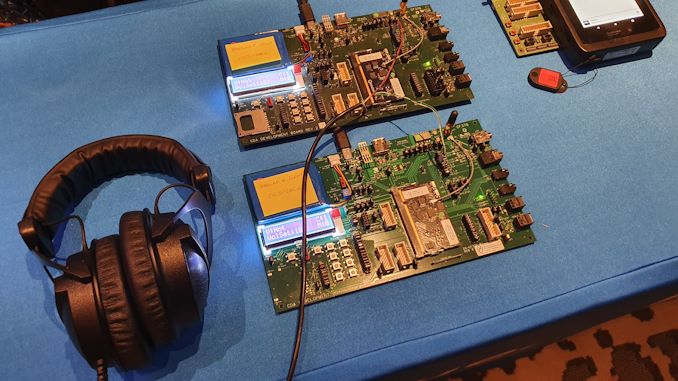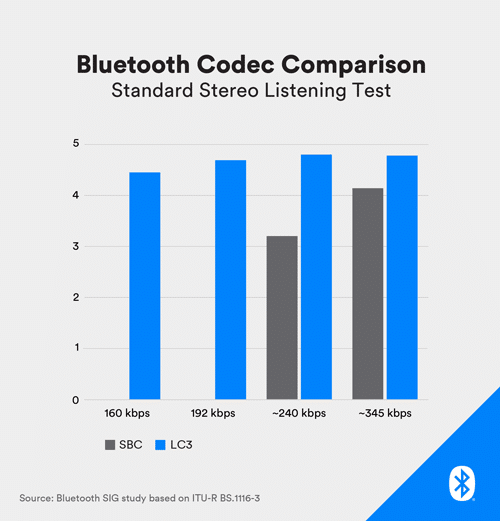CES 2020: Bluetooth SIG Announces LE Audio Standard: New Baseline For Next Decade
by Andrei Frumusanu on January 7, 2020 5:00 PM EST
Yesterday the Bluetooth SIG has announced and released the newest Bluetooth standard for audio playback: LE Audio. The new standard is a complete new redesign of the audio stack, building upon the years of learnings that we’ve seen with Bluetooth audio in the past. The new LE Audio standard expends the flexibility and functionality of audio playback over Bluetooth, and is said to represent the new baseline for future developments over the next decade.
Traditional audio playback should be a familiar matter with everybody in the industry as well as consumers. The existing audio stack has now been renamed to “Classic Audio”, and will continue to coexist alongside the new LE Audio standard.
So what does LE Audio bring? The most important aspect of the new standard is self-explanatory and divulged in its very name; it’s based on the new Bluetooth Low Energy radio as opposed to the Bluetooth Classic radio. As a reminder, LE radio is fundamentally different to the classic radio standard and significantly improves upon the power efficiency of transmissions.
LE Audio also brings a lot of new features and helps today’s TWS (True Wireless Stereo) use-cases that we’ve seen over the last few years. TWS audio products nowdays mostly rely on one earpiece receiving the data signal from the transmitter device, and then re-transmits this to its other channel sibling. This is quite inefficient as you might imagine, as you have to transmit from what is usually a very battery limited device. LE Audio now standardises multi-stream transmissions – the source device is the one who handles transmissions of multiple synchronized streams, so for example a smartphone will be able to transmit to both left and right earpieces in TWS products. It is said that the synchronisation here is in the tens of microseconds, allowing for seamless and transparent playback.
There were multiple companies at the launch event showcasing this capability:

Goodix showcased a production ready development platform with their chipsets, with two of them powering a pair of headphones with flawless synchronisation. Goodix’s demo is Bluetooth 5.1 compliant and supports LE ISOC (isochronous) architecture, which is the official name for this part of the LE Audio standard.
Qualcomm also had a development board showcasing the same feature. Other companies launching LE Audio ISOC solutions were CEVA, Nordic, Dialog and various other vendors.
LE Multi-Stream is envisioned to be able to able to support an unlimited amount of devices when in broadcast mode. Use-cases for this are envisioned to be events and location based broadcasts such as museums or other gatherings, where one would be able to tune into the audio broadcast. It’s to be noted that streams can also be protected as well as public.
Broadcasting also serves as the basis for Audio Sharing, where one can share playback with multiple devices in your immediate surrounding.
The most important aspect of LE Audio is that it brings with it a brand new base audio codec which massively improves upon the aging and lacklustre SBC standard. LE3 (Low complexity communications codec), is actually a quite complex new codec that promises major upgrades in transmission efficiency as well as audio quality.
The most interesting demonstration at the launch event was that of Tim Reilly of T2 Labs. The showcase here was a software demonstration with the ability to seamlessly switch between codecs during audio playback. Tim demonstrated SBC vs LC3 vs no compression, with users being able to hear the difference with the demo headphones.
There were several comparisons to be made. In an equal bitrate scenario at lower absolute bitrates, LC3 was able to blow SBC out of the water in terms of quality. In general, audio quality would only equal out between the two codecs only when SBC had 3x higher bitrate. In essence, LC3 either allows for three times better quality, or three times less energy used when transmitting audio.
The comparison between LC3 and no compression was also very interesting. Although it was quite a noisy environment, I was unable to discern differences in audio playback quality once the LC3 bitrate reached 192kbps. Let’s say that 256kbps would be damn near transparent in terms of quality. 128kbps the differences started to be audible, but still incomparable to how bad SBC sounds at this bitrate.
The LE Audio standard will be released as several standalone specifications for each feature over the course of 2020. What all the features have in common though is that they rely on a new Bluetooth 5.2 core specification, which was publicly released yesterday.
The Bluetooth SIG expects chip manufacturers to be able to release new designs supporting LE Audio over the course of the next year to 18 months, with consumer products (sources and sinks) to closely follow that timeline, with an expected timeline of 18-24 months.
Overall, LE Audio seems to be addressing some of today’s major shortcomings with Bluetooth audio, and most importantly it standardises a new much more capable codec that will hopefully bring some unison to today’s fragmented BT codec landscape. We’re looking forward to the first devices supporting LE Audio and LC3.













48 Comments
View All Comments
hubick - Tuesday, January 7, 2020 - link
This doesn't mention what is really the most important thing: Latency!Most current Bluetooth headsets have 200-300ms latency, which makes watching video suck (poor lip sync) and playing video games just about useless.
There are low latency (50-75ms) codecs like Qualcomm's AptX-LL, but those aren't widely supported and you can't even use them with a PC.
So, yeah, if we're going to live in a wireless audio world, that really kinda needs to be worked on, and I'm not hearing a peep here?
mukiex - Tuesday, January 7, 2020 - link
This this this this this. ^^^^I've got literally nothing to bring to this conversation except to say that hubick is all kinds of correct.
hubick - Tuesday, January 7, 2020 - link
Hahaha, thanks, glad to know I'm not the only person who read this and wondered WTF SIG members. It's prolly full of old dudes that don't game or youtube :-(ikjadoon - Tuesday, January 7, 2020 - link
That's just plain demeaning to old people: if you used Google instead of "gaming or youtube", you'd realize that LE Audio is designed for use in a far more important low-latency environment: hearing aids. All signs point to a lower latency in the protocol.Needless to say, I'm sure you'll enjoy that benefit, too, to "game and YouTube".
For everyone else: https://www.bluetooth.com/learn-about-bluetooth/bl...
ikjadoon - Tuesday, January 7, 2020 - link
If you keep Google'ing, instead of the "games and youtube", you'll see that LC3Plus (a superset of LC3) has a mode for ultra-low latency: 5ms packet size, far better than AptX-LL (if we're comparing apples to apples).ikjadoon - Tuesday, January 7, 2020 - link
For further reading: https://www.iis.fraunhofer.de/en/ff/amm/communicat...levizx - Wednesday, January 8, 2020 - link
And your "further reading" confirmed your nonsense. Under LC3 it's stated LC3 will be part of BT LE as mandatory codec. LC3plus while being listed as standardized, is NOT being considered to be incorporated into BT LE at all.levizx - Wednesday, January 8, 2020 - link
Exactly, it's a SUPERSET, and LE Audio only mentioned LC3 being supported, you CANNOT assume LE audio support it. In factsorten - Tuesday, January 7, 2020 - link
LOL @ old dudes, considering the first image in this article.ikjadoon - Tuesday, January 7, 2020 - link
I think latency will be majorly improved: Bluetooth SIG specifically mention Bluetooth LE Audio being used for hearing aids, which require very low latency:"LE Audio will enable the development of Bluetooth hearing aids that bring all the benefits of Bluetooth audio to the growing number of people with hearing loss.
...
LE Audio will be one of the most significant advances for users of hearing aids and hearing implants. EHIMA engineers have contributed their specialist knowledge to improve the audio experience especially for hard of hearing people. As a result, within a few years most new phones and TVs will be equally accessible to users with hearing loss."
https://www.bluetooth.com/learn-about-bluetooth/bl...